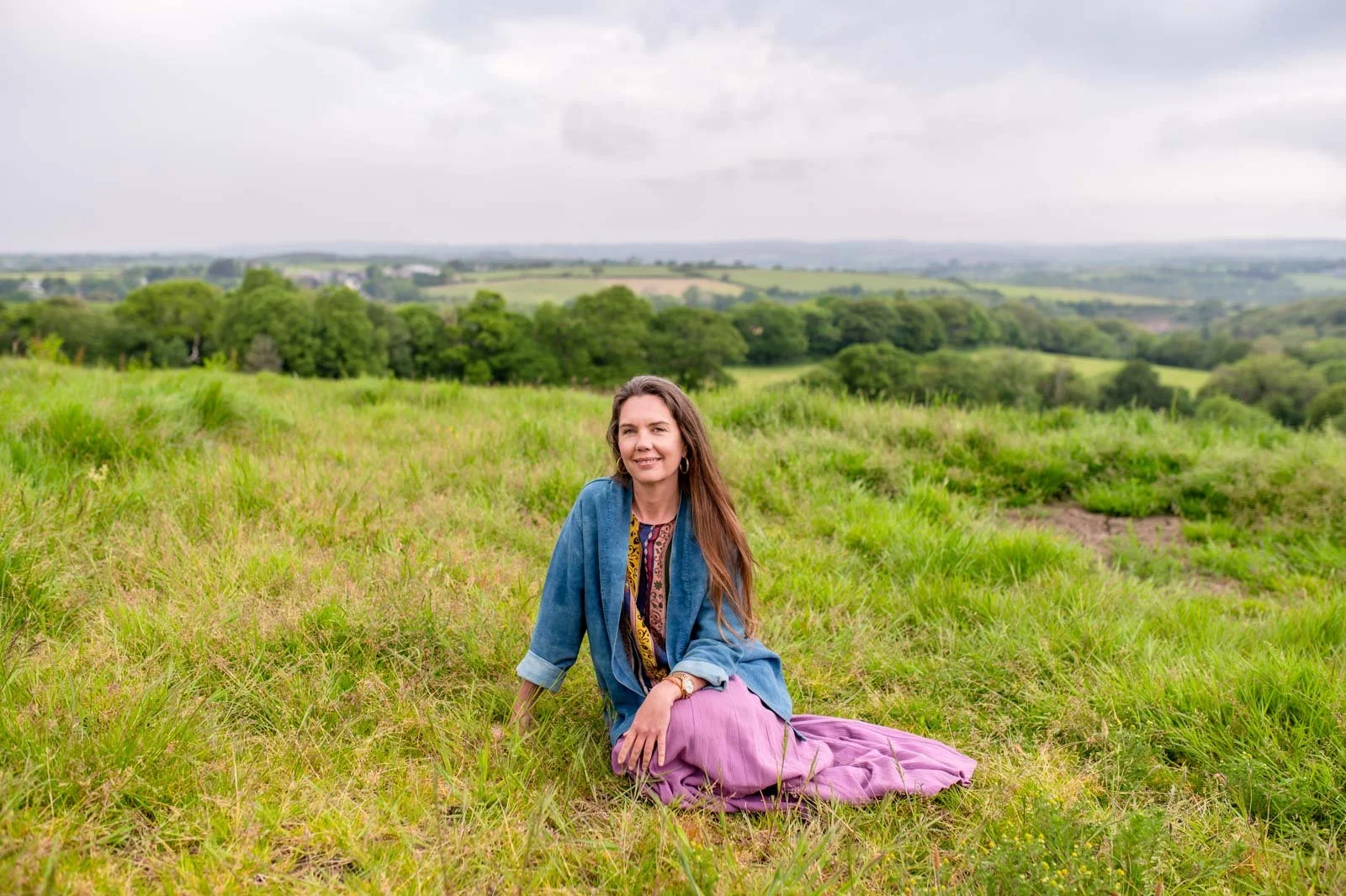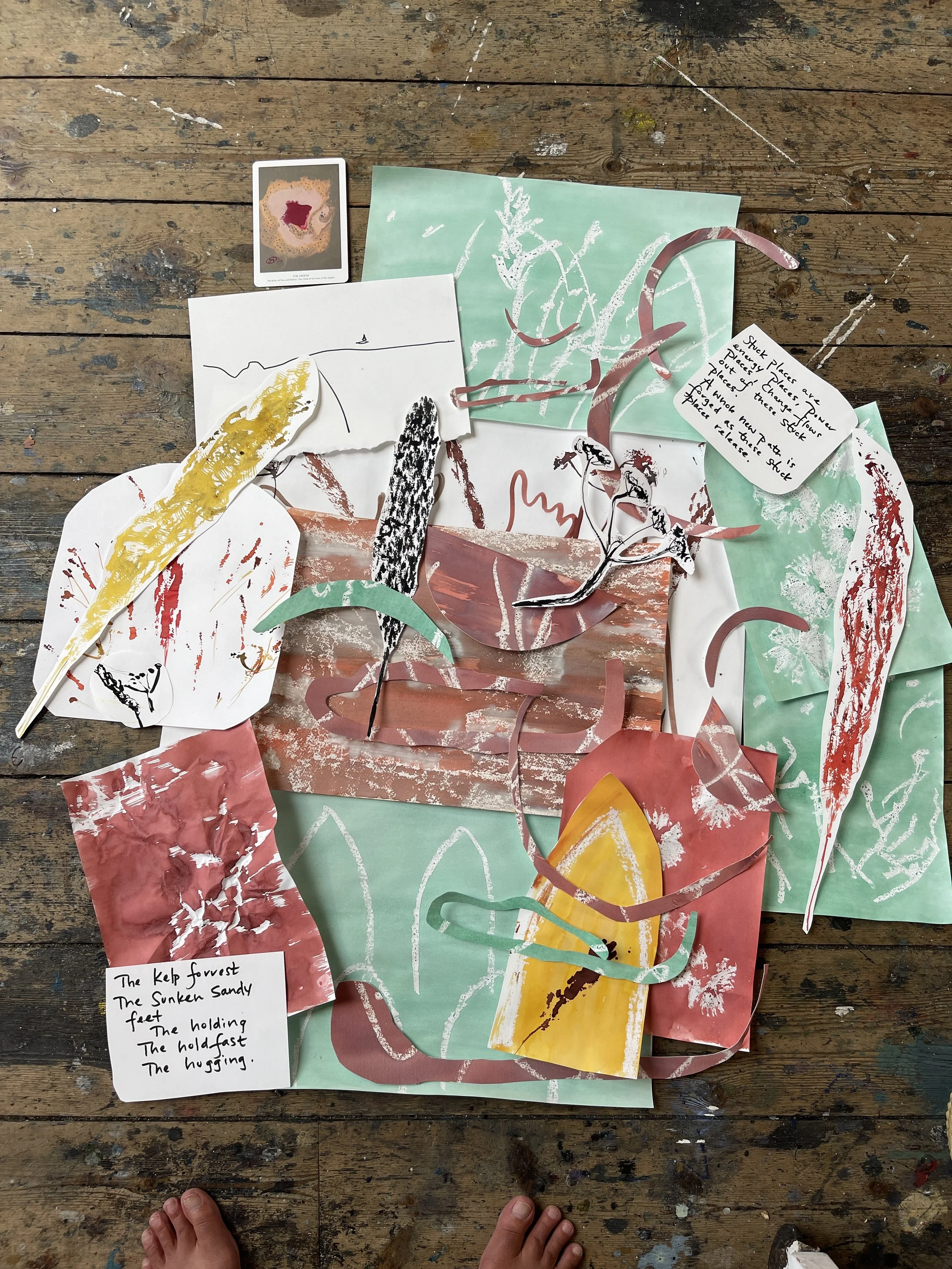Matrixial Moments
Hannah Green
Dear Community,
Happy Autumn! I am enjoying warm apple cider and cool sunny weather here in Cornwall. I am also looking forward to spending some of the upcoming winter in California and hope to connect with some of you there. I am envisioning a day long workshop to welcome the new year. I will keep you posted.
Some of you know that I am in love with imagery. An image can hold our conflicting desires and our deepest wishes, pains, and fears all at once, as if by magic. An image is a sanctuary where seemingly opposite ideas can coexist, and an experience of wholeness is possible for a beautiful, precious moment. An image is a kind of metaphor, and the metaphor is always safe because it can hold us in all our complexity.
In April I took a wonderful class with Kate Southworth and Greg Humphries called Magical Landscapes. We explored surrealism as a bridge between psychoanalysis and magic. In psychoanalysis, we explore the conscious and the unconscious world and the relationship between the two. In magic, the focus is on the relationship between “this world” and the “other world.” Seasonally, this liminal place is what Autumn is all about.
Surrealism and artists like Ithell Colquhoun bridge this seeming gap between psychoanalysis and magic. They give us an experience of their subjective inner world meeting the external, so-called outer world. The result is an image that holds what it is like to be human, where what we see is actually what we feel inside. I believe that psychotherapy, like surrealism, is all about bringing the inner and outer worlds together. I have a theory that this axis between the worlds of the inner and outer is not only where healing occurs but is also where home is. No matter where I am in the world, if I can center myself in this place where the inner experience and the world around me meet, I feel at home within myself.
When we make or see a painting, a sculpture, or a landscape and we are able to bridge the inner and outer world for a moment by beholding the world at the same time as beholding ourselves—connecting with our thoughts, emotions, and sensations—we have what Bracha Ettinger called a matrixial moment. The matrixial gaze, which gives birth to the matrixial moment, was developed by artist and psychoanalyst Bracha Ettinger and I love her way of thinking about making and looking at art that focuses on healing and connection. Kate Southworth introduced me to her theories during the course.
Instead of the usual perspective where the viewer is in control and the artwork is a passive object to be analyzed, the matrixial gaze acknowledges that both the person looking and the artwork affect each other in a shared encounter. This shared encounter relies on compassion and is based on intersubjectivity. This perspective is deeply valuable for art-making and art therapy because it creates a safe in-between space where painful or traumatic experiences can be explored without causing more harm—the artwork acts as a bridge that allows us to connect with difficult feelings and memories in doses we can handle and integrate.
For those of us dealing with trauma, grief, or experiences of being marginalized, the matrixial framework recognizes that making art is relational and that meaning emerges through connection. In therapy, the matrixial gaze allows us to look at our own or others’ artwork with openness and vulnerability and create these emotional connections. We don’t take over someone else’s story through too much interpretation or sit back, remaining distant or removed. Ettinger’s theory articulates what I have experienced, that art is a special place where healing happens—not through control or analysis, but through the caring, shared experience that flows between people across the flexible boundaries between self and other, through the inner and outer worlds.
I treasure these moments in life and with clients. I find the bridges we build through art transformational for both my clients and me. Working this way can help us envision new futures, heal old wounds, and find parts of ourselves that feel lost.
I find in my own art making and in my work with clients that imagery and the matrixial perspective invite healing by intertwining inner experience with the outer world, creating a safe space where wholeness can emerge. It's my kind of magic.
If you’re curious to explore this, I’d love to connect. New clients are warmly welcomed. If you’d like to schedule a first session or learn more about working together, please reply to this email or use the link below to book a session.
Warmly,
Hannah Green MFT

